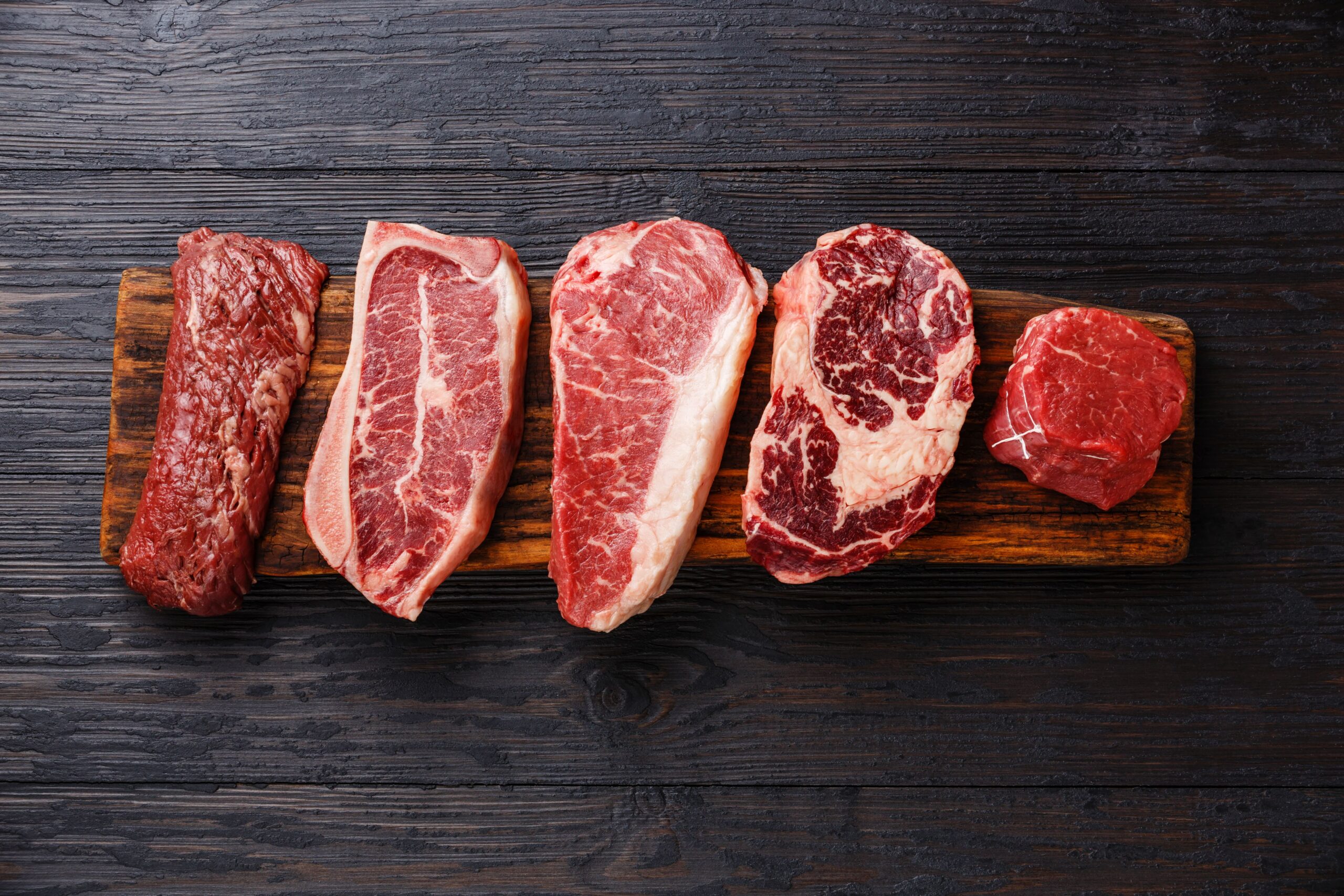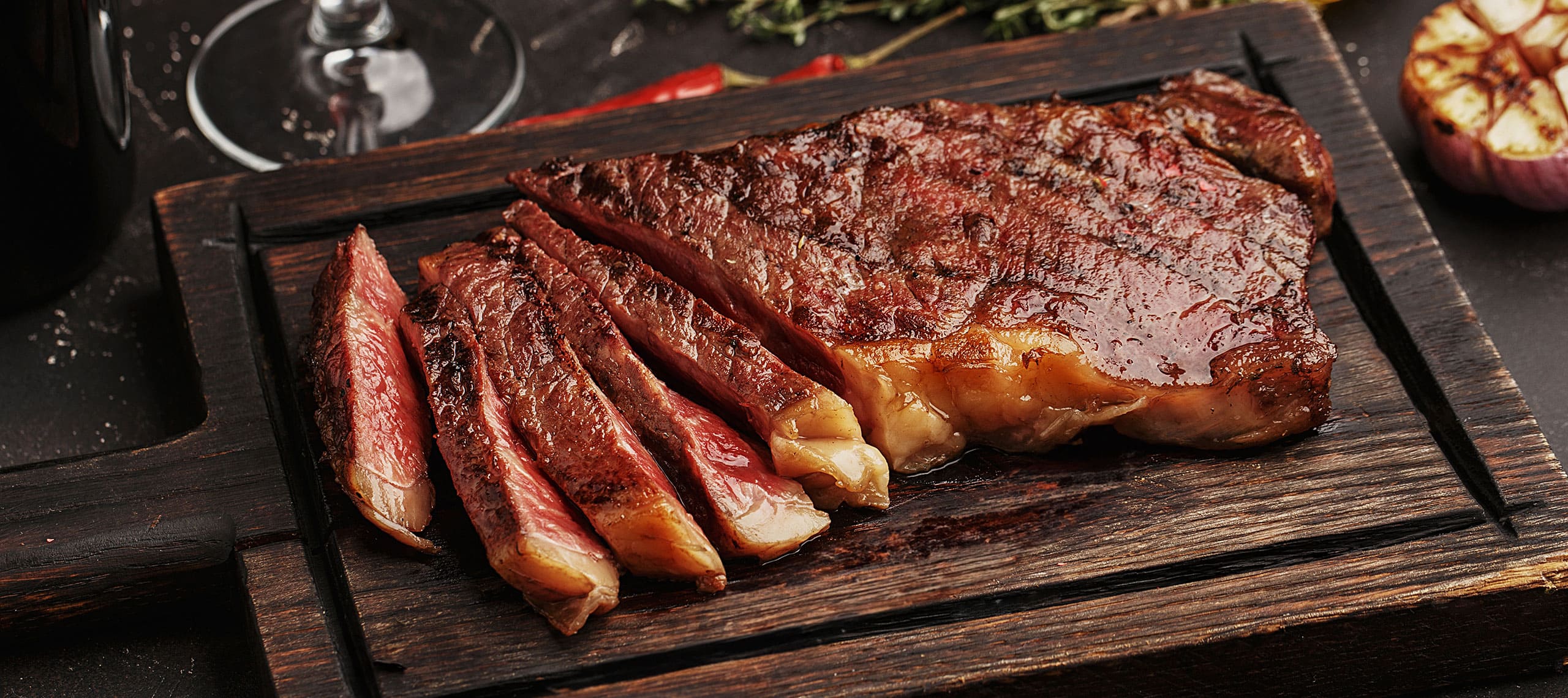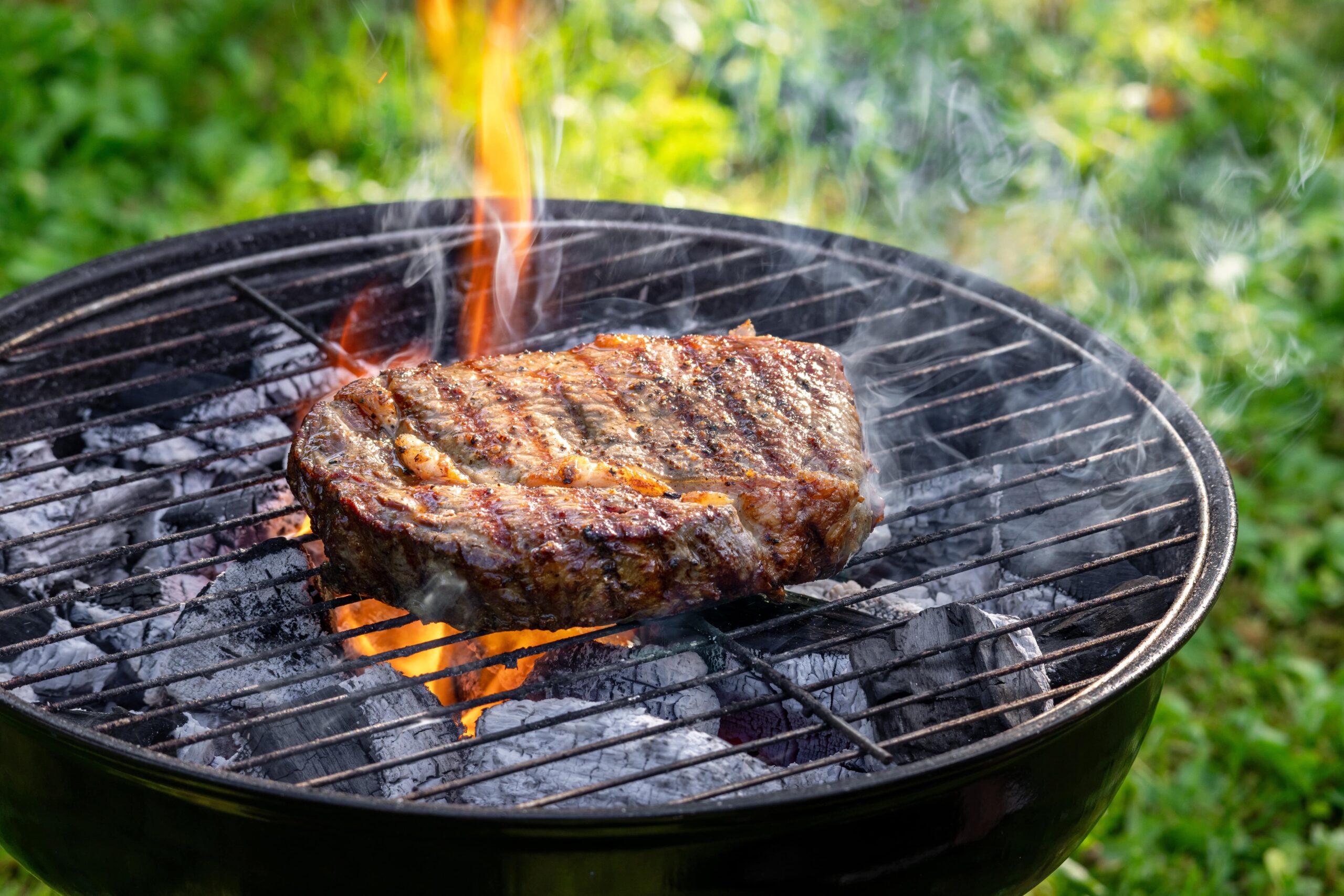When it comes to indulging in a succulent steak, the quality of the meat is paramount. It’s no secret that not all steaks are created equal, and understanding the grading system of the United States Department of Agriculture (USDA) is critical to selecting the perfect cut. Join us as we explore the art of steak selection, decode USDA grades, unravel the mysteries behind the greatness of each steak and elevate your dining experience with every juicy bite.
The USDA grading system categorizes beef into three main grades: Prime, Choice, and Select. Let’s go over the characteristics that set them apart and understand the attributes that make Prime the pinnacle of steak perfection. From marbling and tenderness to flavor profiles, you’ll have all the information you need when choosing your perfect steak.
Prime: The Epitome of Steak Excellence
Indulge in the crème de la crème of steaks with a closer look at Prime-grade beef. Delve into the intricate web of marbling that infuses each cut with exceptional flavor and juiciness. Let’s examine the rigorous standards defining Prime beef and uncover why it stands out as the ultimate choice for steak connoisseurs and the main grade beef we serve on our menu.
Prime beef is the highest grade of beef recognized by the United States Department of Agriculture (USDA). It represents the pinnacle of quality, tenderness and marbling found in beef. To achieve Prime status, beef must meet strict criteria set by the USDA, including abundant marbling, maturity and overall quality.
The Importance of Marbling
Marbling, the intramuscular fat that runs through the meat, crucially contributes to the flavor, tenderness and juiciness. Prime beef boasts exceptional marbling, finely distributed throughout the muscle fibers. The intricate web of fat brings unparalleled taste and succulence to every bite, making Prime steaks a gourmet delight.
Rigorous Standards for Prime Beef
To earn the Prime designation, beef must pass rigorous evaluations based on several factors. These include the age and maturity of the animal, the firmness and texture of the meat and most importantly, the marbling score.
Only around 2-3% of all beef in the United States achieves Prime status, making it a rare and coveted category.
The Role of Marbling Score
The marbling score, determined by trained USDA graders, precisely assesses the amount and distribution of marbling in each cut. Prime beef requires generous marbling, typically with a modest or higher marbling score. This ensures the optimal balance of flavor, juiciness and tenderness that sets Prime-grade beef apart from other grades.
Culinary Delights of Prime Beef
Prime steaks offer a luxurious dining experience, elevating the art of grilling or pan-searing to new heights. The generous marbling found in Prime beef melts during cooking, creating a buttery texture and infusing the meat with intense flavor. Each bite is a harmonious blend of tender meat and rich, savory juices that tantalize the taste buds.
Choice: A Flavorful Journey in Every Bite
Although less exclusive than Prime, Choice-grade beef offers quite a delectable dining experience for the steak connoisseur. The balance between marbling, tenderness and affordability makes Choice-grade steaks a popular option among steak lovers. Join us as we uncover the secrets to selecting the perfect Choice steak, promising rich flavors and an enjoyable texture that will impress your palate.
Choice-grade beef is a high-quality category recognized by the USDA. It represents a step below Prime but still delivers a satisfying eating experience. Choice beef exhibits a commendable level of marbling, tenderness, and flavor, making it an excellent choice for those seeking a balance between quality and affordability.
Balancing Tenderness and Affordability
Choice-grade beef strikes a delicate balance between tenderness and affordability, making it a popular choice among steak enthusiasts. While not as tender as Prime, Choice steaks still provide a pleasing texture and are more accessible in terms of price. This allows steak lovers to enjoy a high-quality dining experience without breaking the bank.
Selecting the Perfect Choice Steak
When choosing a Choice-grade steak, several factors come into play.
Look for cuts with a vibrant, reddish color, indicating freshness. Assess the marbling throughout the meat, aiming for a moderate degree that promises flavor and juiciness.
Also consider the specific cut: certain cuts, like ribeye or New York strip, are known for their excellent flavor and tenderness.
Cooking and Enhancing Choice Steaks
Choice steaks lend themselves well to various cooking methods: think grilling, pan-searing or broiling. The marbling within the meat melts during cooking, creating a tender, succulent steak. To enhance the flavors, season the steak with your favorite spices or marinades, allowing them to complement the natural richness of the meat.
Select: A Leaner Approach to Steak
For those seeking a leaner cut, Select-grade beef presents a viable option. Let’s look at the characteristics distinguishing Select steaks, particularly their lower marbling content and a greater focus on leanness. We can also learn to maximize the Select steak’s tenderness and flavor potential through proper cooking techniques and complementary flavors.
Select-grade beef offers a leaner alternative to higher USDA grades. While it may have less marbling than Prime or Choice, Select-grade beef still delivers an enjoyable dining experience. Select steaks are known for their lower fat content, making them an appealing choice for those who want a leaner option but don’t want to compromise on flavor.
Lower Marbling and Leanness
One of the key characteristics of Select-grade beef is its lower marbling content, resulting in a leaner and slightly firmer texture. This lean profile offers a different culinary experience, appealing to individuals who prefer a lighter, healthier option.
Maximizing Tenderness and Flavor Potential
While Select beef may be leaner, it can still be tender and flavorful when cooked and seasoned properly. To enhance its tenderness, consider marinating the meat before cooking, using ingredients like citrus juices, vinegars or tenderizing enzymes. Slow braising, sous vide or similar techniques can help break down connective tissues and optimize tenderness.
Cooking Techniques for Select Steaks
When cooking Select beef, applying techniques that preserve tenderness and moisture is crucial. Avoid overcooking, as this results in a dry and tough steak. Opt for medium-rare to medium to retain juiciness and tenderness. Consider also dry heat methods — like grilling, broiling, or pan-searing — to develop a flavorful crust while maintaining the desired doneness.
Complementary Flavors
You can enhance Select beef with complementary flavors to elevate the dining experience. Consider using marinades, rubs or herb-infused oils to add depth and complexity to the meat. Pairing Select steaks with flavorful sauces, compound butters or tangy salsas can bring a taste that complements the leaner nature of the beef.
Y.O. Ranch Steakhouse Knows Beef
Choosing the perfect steak is an art, and understanding the USDA grading system is a vital step on that journey. Next time you indulge in a mouthwatering steak, savor every bite with the satisfaction of knowing that you’ve mastered the art of steak selection. And if you want to taste the best of the best, look no further than Y.O. Ranch Steakhouse, where our world-class chefs can create the perfect steak just for you.





